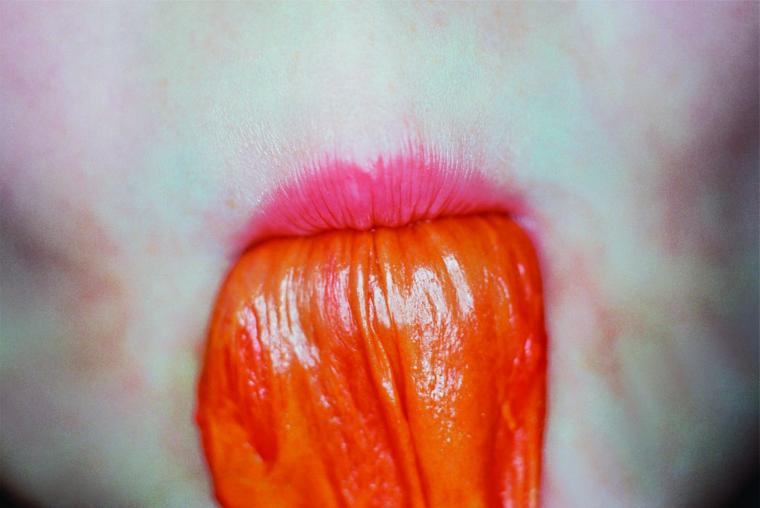
During a trawl of the internet last week, I found an image of a gallery room filled knee-deep with snapshots. It was an installation by Dutch photographer Erik Kessels who had downloaded and printed out all the images uploaded to Flickr over a 24-hour period. There were one million of them. Commentators noted that there are more than six billion photos currently on Flickr - the same number of photos uploaded to Facebook every two months.
Kessels’ installation, staged at Foam Gallery, Amsterdam in 2011, was a dramatic example of the cliché: we are now immersed in images as we have never been before. Live feeds, You Tube footage and social media are ubiquitous and part of daily life.
Perhaps that’s why walking into Aratoi’s current exhibition of photography Now & Then felt so still and silent, the peace broken only by some teenagers who were cracking up at Anne Noble’s Ruby’s Room No.22. This is a full colour close up of the artist’s daughter’ mouth extruding a piece of candy. It’s from a series that to me is one of the most authentic and memorable photographic statements on childhood I can think of.
Now & Then spans four decades of fine art photography in New Zealand and features 38 artists, its basis being the photography collection of Te Manawa Museum of Art Science and History. Many of the works here were featured in The Active Eye exhibition held at the gallery in 1975. It was a landmark show because it aimed to position New Zealand photography as ‘fine art’ at a time when, according to Ted Quinn writing in Photo-Forum magazine, the National Art Gallery had neither a photographic collection, nor intentions regarding photography “….and almost nobody thought of buying a photograph”.
Today people not only collect and invest in photography as an art form but are also moonlighting as photographic artists themselves. Photoshop, an image manipulation programme designed to enable photo professionals and editors to retouch images, is now accessible to the whole family on many home computers. Instagram gives our weekend snapshots an artistic vibe: as a friend said recently, “it makes everything in your life look cool”. Our handheld digital devices have turned us all into potential documentary makers and photojournalists.
Against this backdrop, it's interesting looking at Ans Westra’s image of a 1970s Trentham pub interior, and Fiona Clark’s scenes from a Gay Lib dance in Auckland, 1974.
Ans Westra is known for her ability to merge inconspicuously into her chosen space to capture candid images, carrying an ancient and cumbersome piece of technology - a Haseblad camera. It’s a mode of working that can now be duplicated by a discreet individual with an i-Phone – or can it?
In the context of image overload, maybe it will be those highly staged tableaux like Greg Semu’s Kupapa Wars, (2007) and Fiona Pardington’s Coprinus picaceous (2011) that command most attention because they are so painstakingly achieved by artists at the pinnacle of technical expertise.
In any case, images that seer themselves into your brain, like some shown here, are a magical blend of many ingredients that are not easily captured on i-Phones. My favourite example is Phoenix block, room #54 (2008/9) by Ann Shelton: a circular view through a door into an empty room. All in one go and under the guise of a scene the artist has casually stumbled upon, it manages to be a striking composition and colour study; a catalyst for a whole raft of questions on the nature of the ‘institution’ and the room’s previous and future occupant; and a haunting artifact of a moment in time. To me, that’s art.
Don’t forget to catch PechaKucha at Kokomai on 25 October: a range of guests speaking to 20 images for 20 seconds per image over a total of six minutes and 40 sec… a true event for our times if ever there was one.
Currently showing at Aratoi: Now & Then: Enduring and Developing Themes in Contemporary New Zealand Photography, until 1 December; Breadcraft Wairarapa Schools Art, until 20 October; Sandra Wong: The Usual Suspects & Other Stories, until 6 October